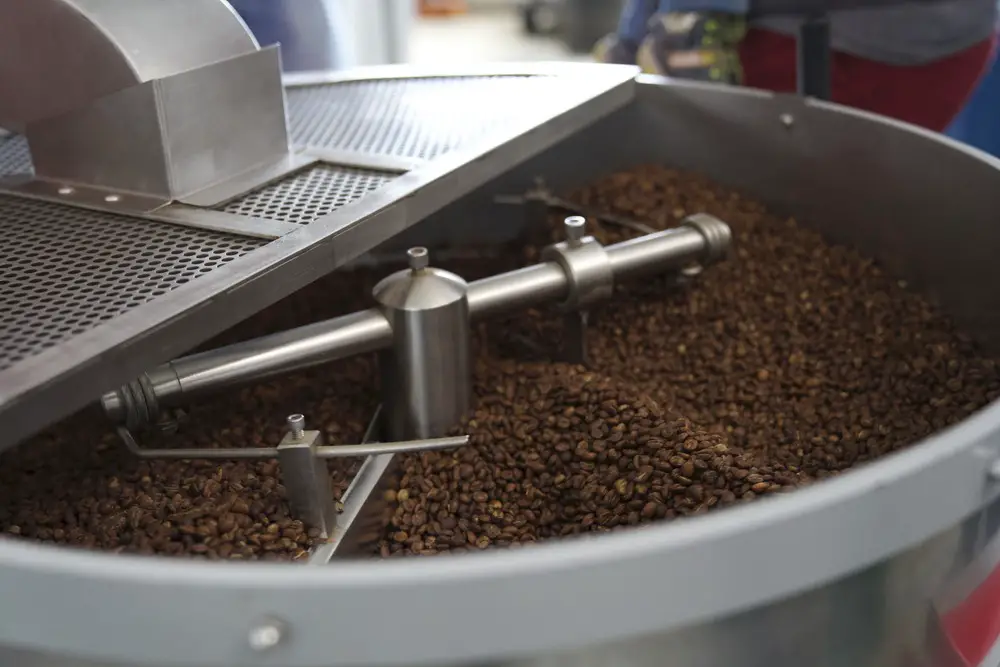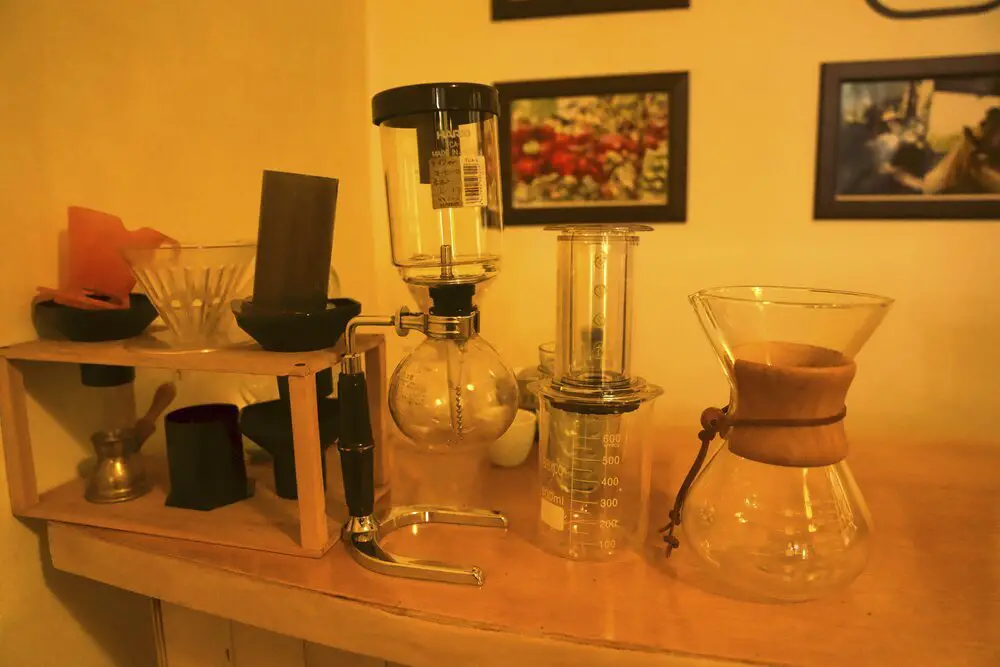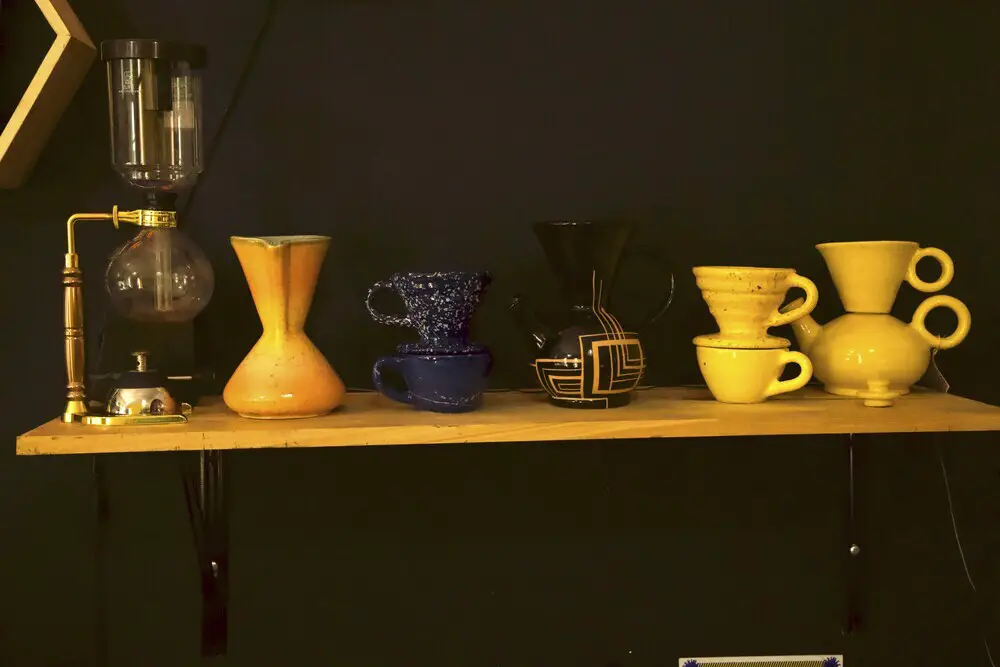As we have always said, making coffee is an art. And coffee lovers know that every detail counts and that there are many factors influencing the taste and aroma of our coffee.
Therefore, today we will talk about one of the first stages to have a good cup of coffee; the roasters. We will discuss what they are, their history, their importance, and the best coffee roasters you can get on the market.
Make your coffee and let’s get started!
Table of Contents
Why this matters?
Although roasting coffee is not a very visible task to the end consumer, either because you buy the ground coffee or roasted beans, it is a very important task that we must pay attention to. If you want to buy a coffee roaster machine, it’s because you surely know its importance since it changes the taste and aroma of coffee.
For this reason, many people have preferred to do the whole process at home. And, although buying a roaster for home use is not so easy, here you will have several options according to your need.
What is a coffee roaster?
It is a special machine for roasting green coffee beans; that is, beans that have not been roasted or processed. Most coffee that is ready for commercializing, whether ground or in beans, has already gone through the roasting process. Then it just needs to be packed or ground.
There are several types of coffee roasters: those that run on gas, firewood, or air, those that are industrial or more artisanal, etc.
The most important part of the roaster is the rotary drum, which will roast the coffee beans as it rotates inside the machine.
However, in industrial roasters, which are for roasting large amounts of green coffee, that rotating drum is replaced by a large tank that roasts the beans with air. It works very similarly to the air fryers we know today. Although they don’t have the rotary drum, this type of toaster has a mechanism that constantly stirs the beans during the process to obtain a uniform color and prevent them from burning.
History of coffee roasters
Its history dates back to the 15th century when coffee lovers realized the relevance of the coffee roasting degree to make the drink that was and still is very much craved by many people.
In the beginning, of course, the device was not exactly what we know today as the coffee roaster, because it was a pan with holes that was heated on a charcoal griddle.
Over the years, roasters evolved. In the late 18th century and throughout the 19th century, roasters began to be shaped as we know them today. And their success spread all over the world.
Later, in the late 19th and early 20th centuries, coffee roasters became more industrial than artisanal due to the rise of this farming product. The technological advances of the time were key to control the temperature in these large roasters and also, improve the degree of roasting of the beans.
In general, the advances of toasters and all the instruments used to prepare coffee were evolving to the same extent that coffee was gaining popularity. In addition, people who have been dedicated for years to study and make coffee were shaping the advances and needs of this industry.
The Best Coffee Roasters
Now let’s look at the best roasters you can get on the market so you can decide which one best suits your needs.
What you should keep in mind when choosing the roaster is:
- What kind of flavor and aroma you want in your cup of coffee and,
- How much coffee you want to roast, because you will find roasters with a capacity from 1 kg to 5,000 kg.
In order for you to make an informed choice, we will explain the advantages and disadvantages of each roaster.
Here are the best roasters:
1. Moracle coffee roaster
One of the best-known roasting machines in the market with 40 W.
It’s designed as a stainless steel roller where coffee beans are added for roasting. This type of design is ideal to have better control of the process and to be able to handle the beans more easily. The roller has small holes, similar to those of a grater, which allow smoke to be released during the roasting process.
Due to its size, it is very desirable to have in small businesses or for those who want to roast coffee at home.
Pros
- It doesn’t make much noise when it is turned on.
- It has a window to check the degree of roasting whenever you want.
- It includes a tray to store the waste that comes in the coffee and that is released during the roasting process through the small holes around it.
Cons
- The entire roaster is heated during the roasting process, so you could easily get burned.
- The motor has to be manually installed.
2. Jiawanshun electric coffee roaster
This electric roaster, which you can order with 110V or 220V, is a good choice to have at home. The bowl is non-stick so that the coffee roasting is uniform.
Its physical appearance is very similar to that of an electric pot, so you can roast almost a pound of coffee. In addition to that, thanks to its design you can make popcorn and toast some kind of dried fruit.
If you already have a little experience in the matter of roasting coffee, in this roaster you can adjust the temperature from 0 ºC to 240 ºC depending on the aroma and taste you want.
Pros
- The roaster is heated automatically to roast the beans evenly.
- Its lid is glass, so it is easy to control the roasting process without having to stop the machine.
- It is a heat-resistant material so you will not burn your hands while it is on.
Cons
- It only measures the temperature in degrees Celsius.
- It has no ventilation mechanism.
- It has no way to release the coffee waste, so it is also roasted with the coffee and can alter its taste.
- The pot is not removable so it cannot be washed with water or the motor will be damaged.
3. ZRZJBX Gene coffee bean roaster
A 220V electric roaster with a modern and sophisticated design.
You can change the temperature from 0 ºC to 250 ºC and the roasting time in the machine. Although these measurements can be freely modified, you can be sure that everything will be under control because the machine is designed so that it doesn’t exceed the regular temperature and time limits. So you don’t have to worry about your coffee getting burned even if you don’t have any experience in this.
The roasting chamber is non-stick, this makes it easy to roast and clean. It also has a window to control the color and degree of roasting without the need to stop the machine.
Pros
- Temperature and time controlled system.
- The glass pot is removable, making it easier to handle and clean.
- It has LED light indicators to show the stage of the roasting process.
Cons
- Maximum capacity of 300 g of coffee.
- It can be expensive to have at home compared to other brands.
4. Aitocco coffee roasting machine
An easy-to-use 220V roaster with a simple design.
It is an automatic machine that regulates the temperature so that it is constant and the roasting is uniform. You can adjust the time to achieve different degrees of roasting.
It has a roasting capacity of 300 g to 400 g of coffee per brew.
Pros
- It has a glass lid so you can easily check the coffee during the process.
- No need to install the engine.
Cons
- It has no ventilation, so coffee oils can generate a lot of smoke.
- Temperature cannot be regulated.
5. TOPQSC coffee roaster
It is a 220V stainless steel roaster that keeps the heat very well steadily so that the beans are roasted evenly.
Its design is roller type and, at one end, has a removable part to take out the coffee beans once they are ready. Due to its small size and motor, it has 45 rotations per minute, which allows the roasting time to be faster.
It has a very quiet motor so that you can hear how the coffee beans are spinning and sound different as they lose hydration. This roaster can be connected to a gas or electric stove for functioning.
Pros
- It’s very quiet.
- Adjustable temperature.
- It is quick to roast a batch of coffee. It takes about 15 minutes to have the perfect roast.
Cons
- The motor has to be manually installed.
- It has a maximum capacity of 120 g of coffee per use.
6. Fresh Roast SR540 coffee roaster
This toaster has a quite elegant design of 120V; although it is a little different from those we have seen before because at first glance, it is very similar to a blender.
It has a digital display to show the temperature level in real time. You can also adjust the temperature, time, and fan. It has 9 levels of heat and ventilation which makes it more adjustable for the user.
Its small size and the benefits it offers have positioned it as a favorite for coffee lovers.
Pros
- The machine has a special function to cool the coffee once it has been roasted.
- The temperature, heat, and ventilation are adjustable up to 9 levels.
- It’s fast, you can get a medium degree of roasting in just 9 minutes.
- It has a waste collector.
Cons
- It has a maximum capacity of 120 g per preparation.
- The waste collector doesn’t always discard all unwanted items, so it is necessary to pass the coffee beans through a strainer to have a clean batch.
7. Nuvo Eco ceramic coffee roaster
Our latest recommendation is a very different roaster than the ones we’ve seen before. Starting with its material, which is eco-friendly ceramic and not stainless steel nor non-stick material like most. In addition, the grip handle is covered with cowhide.
It is produced in Korea, which is known for producing good household appliances.
This ceramic coffee roaster has a hole in the center that allows you to keep an eye on the level of roasting more easily. It is small, so it will also be very convenient to transport and is multifunctional because you can toast other types of grains.
It can be used in gas or electric stoves and thanks to its material, it is very easy to clean.
Its unique style and the perfect results it offers to the user have been a determining factor for it to qualify on Amazon with 4.6 stars out of 5.
Pros
- Its material is easy to clean and will assure that your coffee doesn’t have any metal or plastic taste.
- Its special shape and design make it perfect for controlling the degree of roasting of the beans.
- Thanks to its size it is very easy to carry.
Cons
- It has a maximum capacity of 70 g per use.
How to roast coffee?
If after reading this ranking you still don’t know how coffee is roasted, do not worry! We teach you.
As we have explained throughout this guide, the degree of roasting will influence the taste and aroma you will get in your drink.
Although there are many factors that influence the final result, this is one of the first and, therefore, of the most important. Keep in mind that the brands of ground coffee you get in supermarkets at very low prices – very commercial ones, can roast the beans at very high temperatures to dull the ugly flavors of the bad coffee beans they use.
The idea of roasting green coffee, in general, is to have beans of a dark and homogeneous color. The average time will be 15-20 minutes, but this will depend on how many you are going to roast and which roaster you chose.
Process
Here are the steps for roasting coffee in an industrial or air roaster.
- Be sure to clean the roaster very well so that there is no residue from previous preparations.
- Add the beans to the roaster and heat them to a temperature between 150 ºC and 220 ºC.
- Check the beans at 15 minutes to know if the time was enough. (Time may vary). At this point, you will be able to play a bit every time you roast the beans. We recommend you try a different time each time so that you can find the perfect point.
- Let the coffee cool. Normally, industrial roasters have another container or other function which is especially for coffee cooling. The reason is that if it doesn’t cool down quickly, the heat that is stored in each bean can continue to roast the coffee and cause a burnt bean with very bitter flavors.
- Ready, you can now enjoy a freshly roasted coffee!
If you are going to use a more artisan roaster, the process is very similar, but on a smaller scale. You should add the green coffee beans to the roaster and wait until they have the perfect color.
Keep in mind that the longer the coffee is in the roaster it will have less acidity, greater body, more bitterness and the volume of the bean will be reduced by the loss of moisture.
How to clean a coffee roaster?
Washing and maintaining very well the instruments we use for the preparation of coffee is quite important because this way we will ensure that the taste is not influenced.
If your roaster, grinder, coffee maker, filter, or other instruments have residues of previous preparations or chemicals that have formed due to use, the taste of your coffee will not be the same even when you strive to make it good.
Normally, the rotary drum of roasters is removable and therefore very easy to wash. Just remember to wash it with a soft sponge so as not to damage the non-stick and take away the lifespan of your roaster.
Conversely, if you have a pot-type roaster whose parts are not removable, you should clean it with a cloth as it can’t get wet or the engine could be damaged. It is best to use a soft cloth to remove all the residue left after using it and thus, take care of the non-stick.
So…
If you decided to roast your coffee at home, surely you’ll have days full of aromas and flavors that will captivate your palate. Lovers of good coffee know that every detail counts and the degree of roasting, without a doubt, is one of the details worth paying attention to.
Remember that each roaster was designed to meet different needs. Make sure you know what you are looking for to make the best choice with this guide we have presented.



